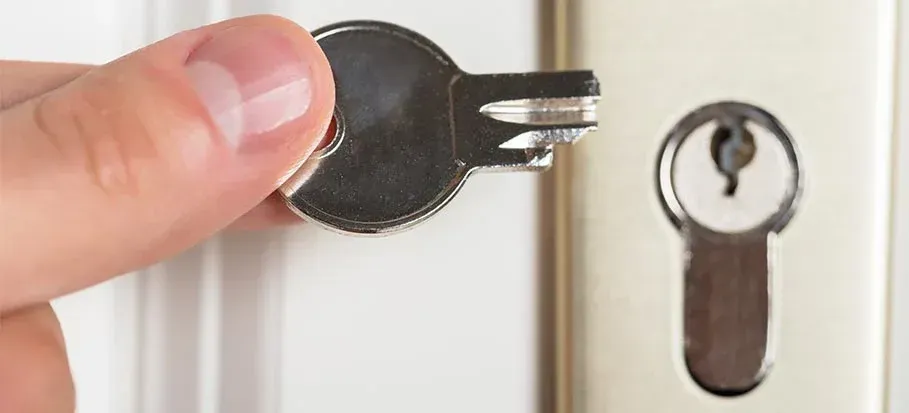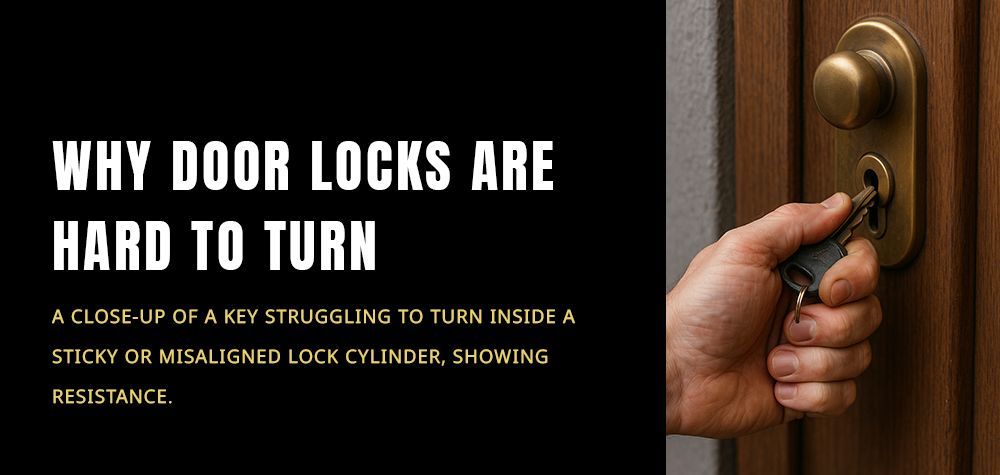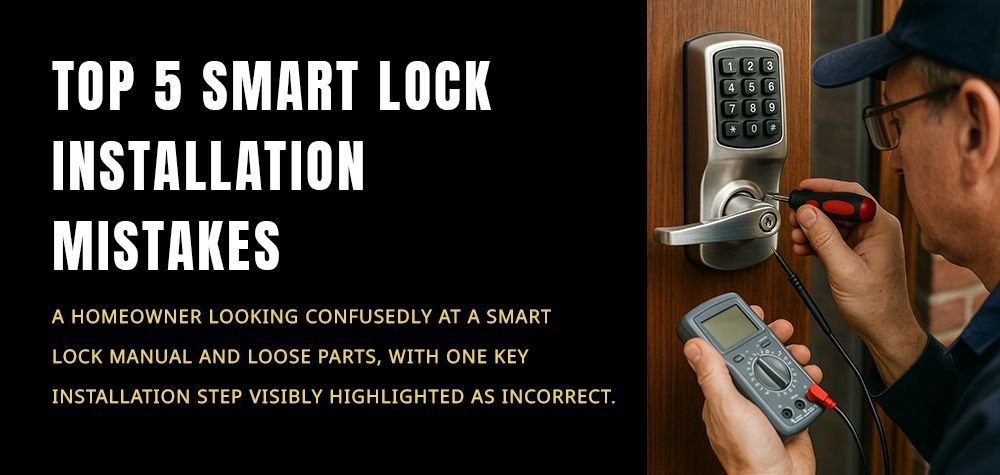6 Simple Ways To Get A Broken Key Out Of A Lock
Dealing with a broken key stuck in a lock can be a frustrating experience, but fear not, as there are several effective methods for extracting it. Whether you've snapped your key while trying to unlock a door or accidentally broken it off inside a padlock, knowing how to safely remove the broken key is essential. In this guide, we'll explore six simple yet reliable techniques that can help you retrieve a broken key from a lock.
From using common household tools to specialized extractor devices, each method offers its own approach to resolving this common issue, ensuring you regain access to your lock without the need for professional assistance. Let's dive into these key extraction methods to learn how to tackle this problem with confidence and ease.
Read more about What to do when key won't turn in lock!
How to Remove a Broken Key from a Lock
Tweezers Method
Using tweezers is one of the most straightforward approaches to extracting a broken key from a lock. Here's how you can use this common household tool to retrieve the broken key:
- Select Fine-Tipped Tweezers: Begin by selecting a pair of tweezers with fine, pointed tips. These tweezers should be slim enough to fit into the keyhole and grasp onto the broken key fragment securely.
- Insert Tweezers into Keyhole: Carefully insert the tweezers into the keyhole, ensuring that the tips are positioned to grip the broken key fragment. Take your time and gently maneuver the tweezers to locate and grasp onto the broken piece.
- Gently Pull Out Key Fragment: Once you've securely grasped the broken key fragment with the tweezers, apply gentle pressure to pull it out of the lock. Be cautious not to exert too much force, as this could cause the key fragment to break further or damage the lock mechanism.
- Inspect for Remaining Key: After removing the broken key fragment, inspect the lock to ensure that no remaining pieces are lodged inside. Use a flashlight to illuminate the keyhole and carefully examine the interior.
- Test the Lock: Once you're confident that all key fragments have been removed, test the lock by inserting a spare key or the original key (if available). Ensure that the lock functions smoothly and that the key operates without any obstruction.
Broken Key Extractor Tool
A broken key extractor tool is a specialized device designed specifically for removing broken keys from locks. Here's how to use this professional solution effectively:
- Select the Right Extractor Tool: Broken key extractor tools come in various sizes and designs to accommodate different types of locks and key fragments. Choose an extractor tool that matches the size and shape of the broken key fragment you need to remove.
- Insert Extractor into Keyhole: Insert the extractor tool into the keyhole alongside the broken key fragment. Ensure that the extractor's serrated edge is facing toward the key fragment for optimal grip.
- Engage Extractor's Gripping Mechanism: Once the extractor is inserted into the keyhole, gently rotate it to engage its gripping mechanism with the broken key fragment. The serrated edge of the extractor should catch onto the key fragment securely.
- Apply Gentle Pressure: With the extractor securely engaged with the broken key fragment, apply gentle pressure to pull the key fragment out of the lock. Use slow and steady movements to avoid further damaging the lock or causing the key fragment to break further.
- Inspect and Test the Lock: After successfully removing the broken key fragment, inspect the lock's keyhole to ensure that no remaining pieces are lodged inside. Test the lock with a spare key or the original key (if available) to verify that it functions smoothly without any obstruction
Read here about Types of locks and their application!
Jigsaw Blade Technique
The jigsaw blade technique is a creative DIY method for removing a broken key from a lock using a common household tool. Here's how to use this technique effectively:
- Select a Thin Jigsaw Blade: Choose a thin jigsaw blade that is narrow enough to fit into the keyhole alongside the broken key fragment. The blade should be flexible and sturdy enough to withstand the extraction process.
- Insert the Blade into the Keyhole: Carefully insert the jigsaw blade into the keyhole, positioning it alongside the broken key fragment. Ensure that the blade is inserted far enough to reach the base of the key fragment.
- Apply Pressure and Wiggle: Once the blade is inserted, apply gentle pressure while simultaneously wiggling it back and forth. The goal is to maneuver the blade in a way that hooks onto the broken key fragment and allows you to pull it out.
- Slow and Steady Movements: Use slow and steady movements to avoid causing further damage to the lock or pushing the broken key fragment deeper into the mechanism. Patience is key, as it may take some time to dislodge the key fragment.
- Remove the Key Fragment: As you wiggle the jigsaw blade, you should feel it hook onto the broken key fragment. Once you have a firm grip, carefully pull the blade out of the keyhole, bringing the key fragment with it.
- Inspect and Test the Lock: After successfully removing the broken key fragment, inspect the lock's keyhole to ensure that no remaining pieces are lodged inside. Test the lock with a spare key or the original key (if available) to verify that it functions smoothly without any obstruction.
Read more about Door knob won't turn in and how to fix it!

Super Glue Method
The super glue method is a simple yet effective way to extract a broken key from a lock using household adhesive. Here's how to use this technique:
- Gather Supplies: You'll need a small amount of super glue and a thin, stiff object such as a toothpick or paperclip.
- Apply Super Glue: Carefully apply a small drop of super glue to the end of the toothpick or paperclip.
- Attach to Broken Key: Press the glue-coated end of the toothpick or paperclip onto the broken end of the key stuck in the lock. Hold it in place firmly for a few seconds to ensure a strong bond.
- Allow Glue to Set: Give the super glue some time to set and bond with the broken key fragment. This usually takes a few minutes.
- Gently Pull Out Key: Once the glue has set, slowly and carefully pull the toothpick or paperclip, along with the attached broken key fragment, out of the lock. Apply steady, even pressure to avoid breaking the key further or damaging the lock.
- Inspect and Test: After removing the broken key fragment, inspect the lock's keyway to ensure no residual glue or key fragments remain. Test the lock with a spare key or the original key (if available) to verify that it functions smoothly without obstruction.
Read more about Open multiple locks with single key!
Tapping the Cylinder Technique
The tapping the cylinder technique involves using gentle tapping or vibration to dislodge the broken key fragment from the lock's internal components. Here's how to use this method effectively:
- Prepare the Area: Ensure you have a clear workspace around the lock. Position yourself comfortably and have a small hammer or similar tool on hand.
- Apply Tapping Pressure: With the broken key fragment still lodged in the lock, lightly tap the outer surface of the keyway or the side of the lock cylinder with the hammer. Alternatively, you can use a screwdriver handle or a rubber mallet for softer tapping.
- Vary the Pressure: Start with gentle taps and gradually increase the pressure if the key fragment doesn't dislodge. Be careful not to apply excessive force, as this could damage the lock mechanism.
- Use Vibration: In addition to tapping, you can also try applying vibration to the lock by gently shaking it or using a vibrating tool. The vibrations may help loosen the key fragment and allow it to fall out of the lock.
- Remove the Key Fragment: After tapping and vibrating the lock for a few moments, check to see if the broken key fragment has dislodged. If it hasn't, repeat the process, adjusting the pressure and angle as needed until the key fragment loosens and can be easily removed.
- Inspect and Test: Once you've successfully removed the broken key fragment, inspect the lock's keyway to ensure no residual debris remains. Test the lock with a spare key or the original key (if available) to verify that it functions smoothly without obstruction.
Probe and Pull Method
The probe and pull method involves using a small, slender tool to probe the keyway and carefully maneuver the broken key fragment out of the lock. Here's how to use this method effectively:
- Gather Your Tools: Before starting, gather a thin, sturdy tool such as a small screwdriver, a thin piece of wire, or a specially designed broken key extractor tool.
- Insert the Probe: Insert the probe tool into the keyway alongside the broken key fragment. Be gentle to avoid pushing the fragment further into the lock.
- Maneuver the Fragment: Once the probe is inserted, carefully maneuver it around the broken key fragment. Try to hook or catch onto the fragment with the tip of the probe.
- Apply Gentle Pressure: With the probe hooked onto the key fragment, apply gentle pressure to pull the fragment out of the lock. Use steady, controlled movements to avoid breaking the key further or damaging the lock mechanism.
- Rotate if Necessary: If the broken key fragment is stuck or wedged tightly in the lock, try rotating the probe slightly to create more leverage. This may help loosen the fragment and facilitate its removal.
- Remove the Fragment: Continue maneuvering and pulling with the probe until the broken key fragment is completely removed from the lock. Be patient and take your time to avoid causing damage to the lock.
- Inspect and Test: After successfully removing the key fragment, inspect the lock's keyway to ensure no residual debris remains. Test the lock with a spare key or the original key (if available) to verify that it functions smoothly without obstruction.
Conclusion
In conclusion, dealing with a broken key in a lock can be a frustrating experience, but with the right techniques and tools, it's possible to resolve the issue effectively. From using tweezers and broken key extractor tools to employing methods like the jigsaw blade, super glue, tapping the cylinder, and the probe and pull technique, there are several options available depending on the situation.
However, it's essential to approach the task with caution and patience to avoid causing further damage to the lock. By following these simple methods and steps outlined above, you can safely extract a broken key from a lock and restore its functionality. If unsure or unable to handle the situation yourself, it's advisable to seek professional assistance from a locksmith to avoid potential damage to the lock or keyway.
Call Us Any Time!







